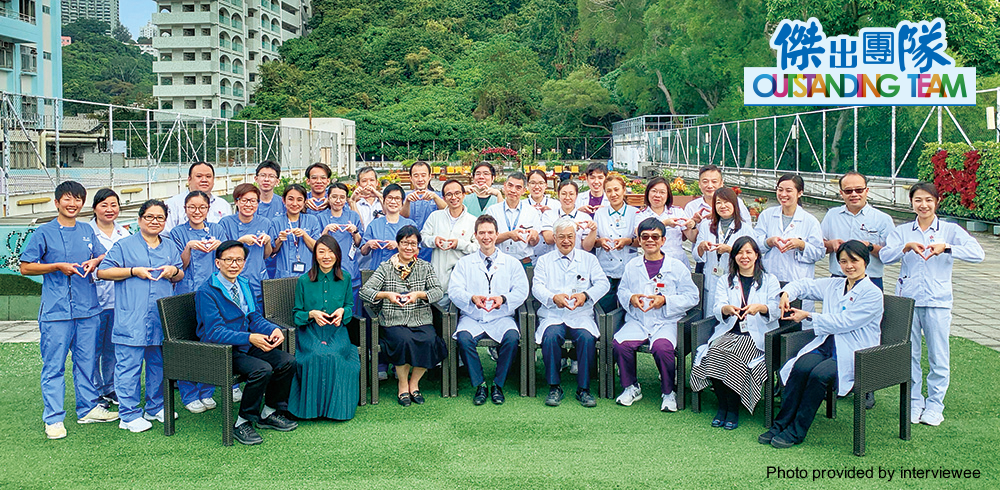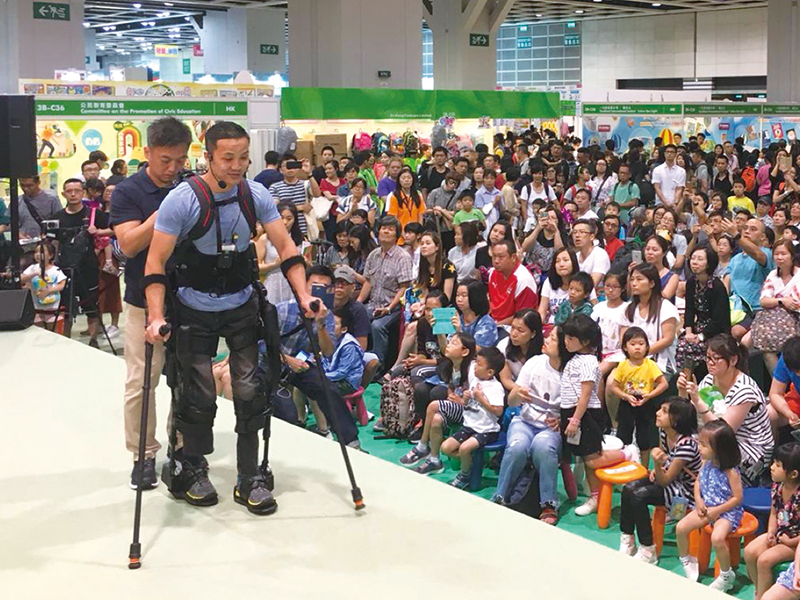Holistic care – A glow in the dark walk of ‘orphan patients’
Spinal Cord Injury Rehabilitation TeamMacLehose Medical Rehabilitation Centre
Here in Hong Kong, there are around 200 new cases of traumatic spinal cord injuries every year, which result from car accidents, industrial accidents or falls. The elderly are also especially prone to spinal cord injury (SCI) as their degenerated spines are vulnerable to severe injury. Patients often suffer immediate and irrecoverable neurological loss, and end up with severe disabilities for the rest of their lives. SCI is therefore regarded as an unknown cure nowadays.
Due to their relatively small numbers, SCI patients have often been referred to as the ‘orphaned group’ of patients. Prolonged hospital stay, high rate of recurrent admissions, enormous recurrent medical expenses, and costs of adaptive equipment and institutionalised care, coupled with unmeasured costs of loss of income and productivity etc., all factors into the devastating and far reaching effects this disease has on the public healthcare system at large.
As the saying goes, ‘when God closes a door, he opens a window’. Through tireless teamwork and dedication, the SCI rehabilitation team has provided comprehensive care and treatment in treating this group of severely disabled patients throughout the long journey of rehabilitation.
According to Dr Koljonen Paul Aarne, Associate Consultant of Orthopaedics and Traumatology and team leader of the MacLehose Medical Rehabilitation Centre (MMRC) SCI service, optimal health care services for patients with SCI need to emphasise the importance of a comprehensive continuum and efficient delivery of rehabilitation through effective teamwork and seamless coordination. The MMRC SCI team has introduced a number of state-of-the-art clinical services over the past several years which have addressed important gaps in the current services. For example, using robotics to mobilise patients during the critical window of rehabilitation has allowed them to increase the training intensity, thus reducing patients’ length of stay in hospital. The team has also been able to leverage global expertise to improve local services, such as employing new technology to wean off patients from life-long ventilators – which significantly shortens the length of stay for ventilator-dependent patients and dramatically improves patients’ quality of life.
Patients’ success stories have been the team’s greatest motivation over the years. Recalling several encouraging ones, Dr Koljonen describes how a teenage tetraplegic patient who has been living off a ventilator since a recreational accident five years ago, is now able to produce astoundingly beautiful works of art by using adaptive computer devices with Bluetooth control. Another heart-warming example is a young illustrator who became tetraplegic after being hit by a falling object. With the help of the MMRC SCI team, not only has she returned to gainful employment in the illustration industry, but also is able to produce artwork for charity purposes. Last year, the team held an art exhibition to showcase to the public the fruitful success these patients have achieved along the way.
Groundbreakers
Every Second Counts
Enlightening the Next Generation
Mighty Support
Voices of Experts


